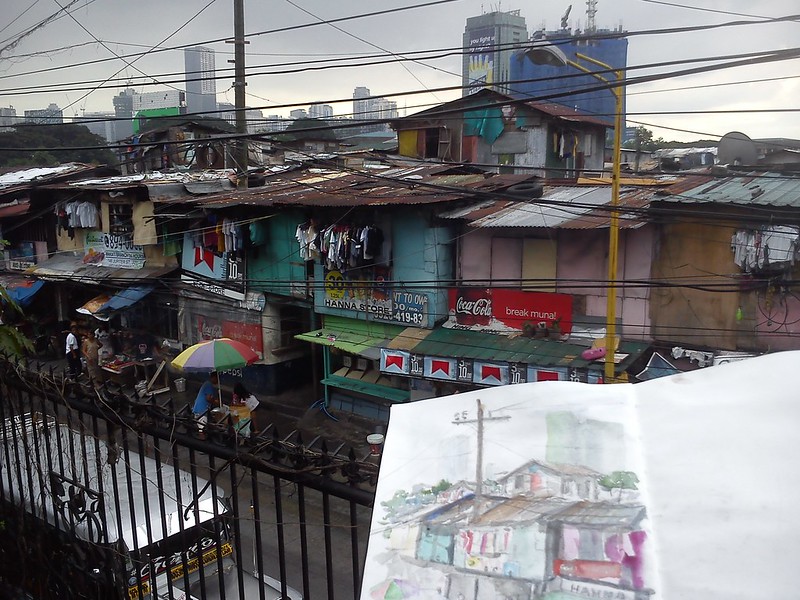To say that Manila is a city of contrasts would be an euphemism as it hides the overwhelming inequalities of this metropolis; one of the most densely populated city proper in the world.
 |
| Makati. Guadalupe Viejo, Manila |
Makati is considered as the financial center of the Philippines and it is part of the most important financial, commercial and economic districts of Asia. In Makati, great skyscrapers coexist with the humblest shacks. If in my previous post I dealt with the popular dwellings in the rural areas, the Nipa huts, this time I focus on the humble and precarious constructions of dwellings in the capital which are built with sheet of steel or wood. Multicolored and fragile shacks extend in the Manila cityscape next to the skyscrapers.
This urban chaos is accompanied by a motley tangle of electric cables. And if we add the characters to this urban landscape, this was the interesting scenario that I found in front of my notebook. A challenge.
|
Decir que Manila es una ciudad de contrastes sería un eufemismo que esconde las sobrecogedoras desigualdades de esta metrópoli, una de las más densamente pobladas del planeta.
Makati es el centro financiero por referencia de Filipinas y conforma parte de los distritos financieros, comerciales y económicos más importantes de Asia. En Makati coexisten los grandes rascacielos con las chabolas más humildes. Si en mi anterior entrada trataba de las viviendas populares de las zonas rurales, las chozas de Nipa, las precarias construcciones humildes de la capital se forman con chapas de hojalata o madera. Multicolores y frágiles chabolas se extienden en el paisaje urbano de Manila junto a los rascacielos.












No hay comentarios:
Publicar un comentario